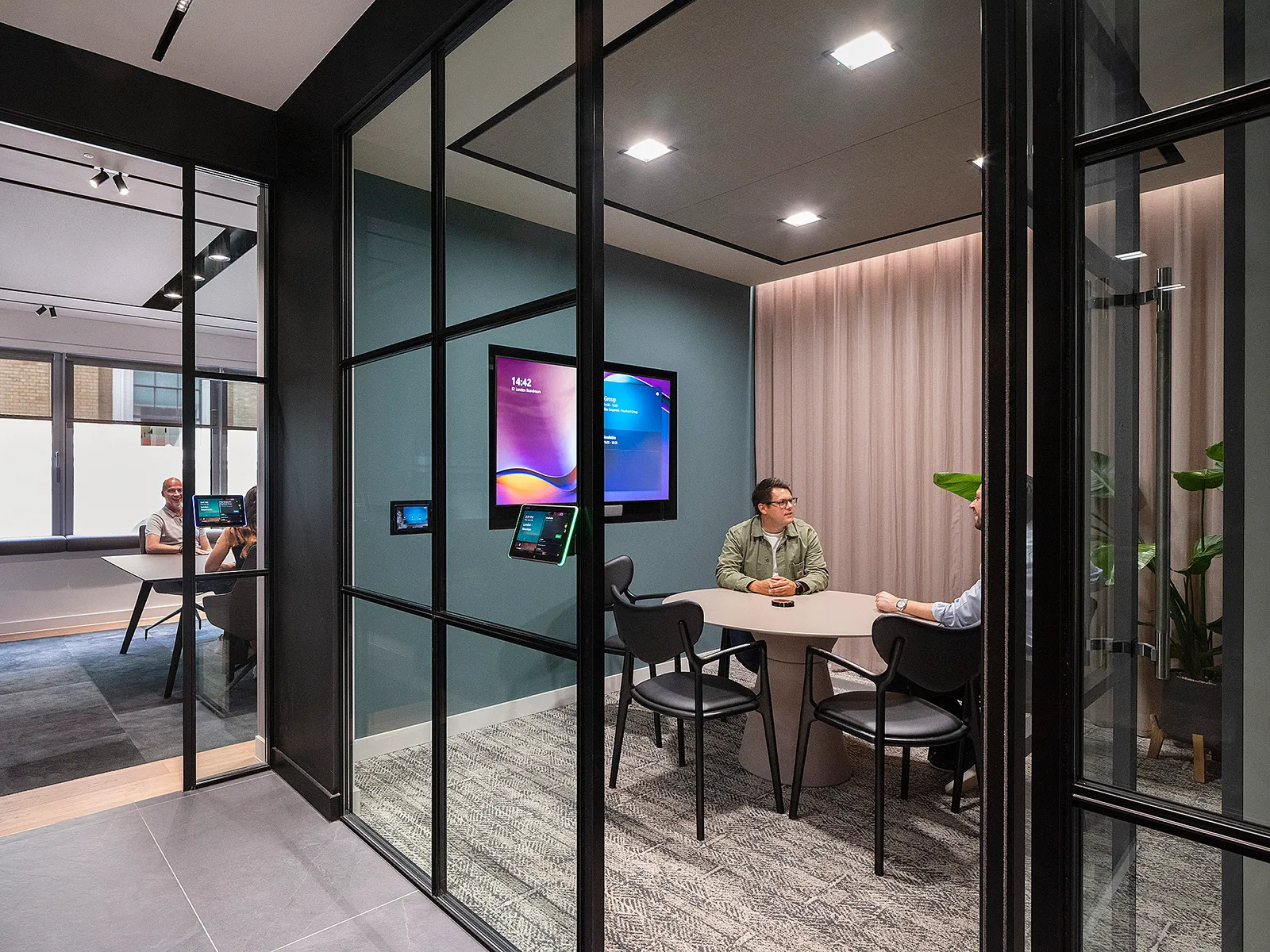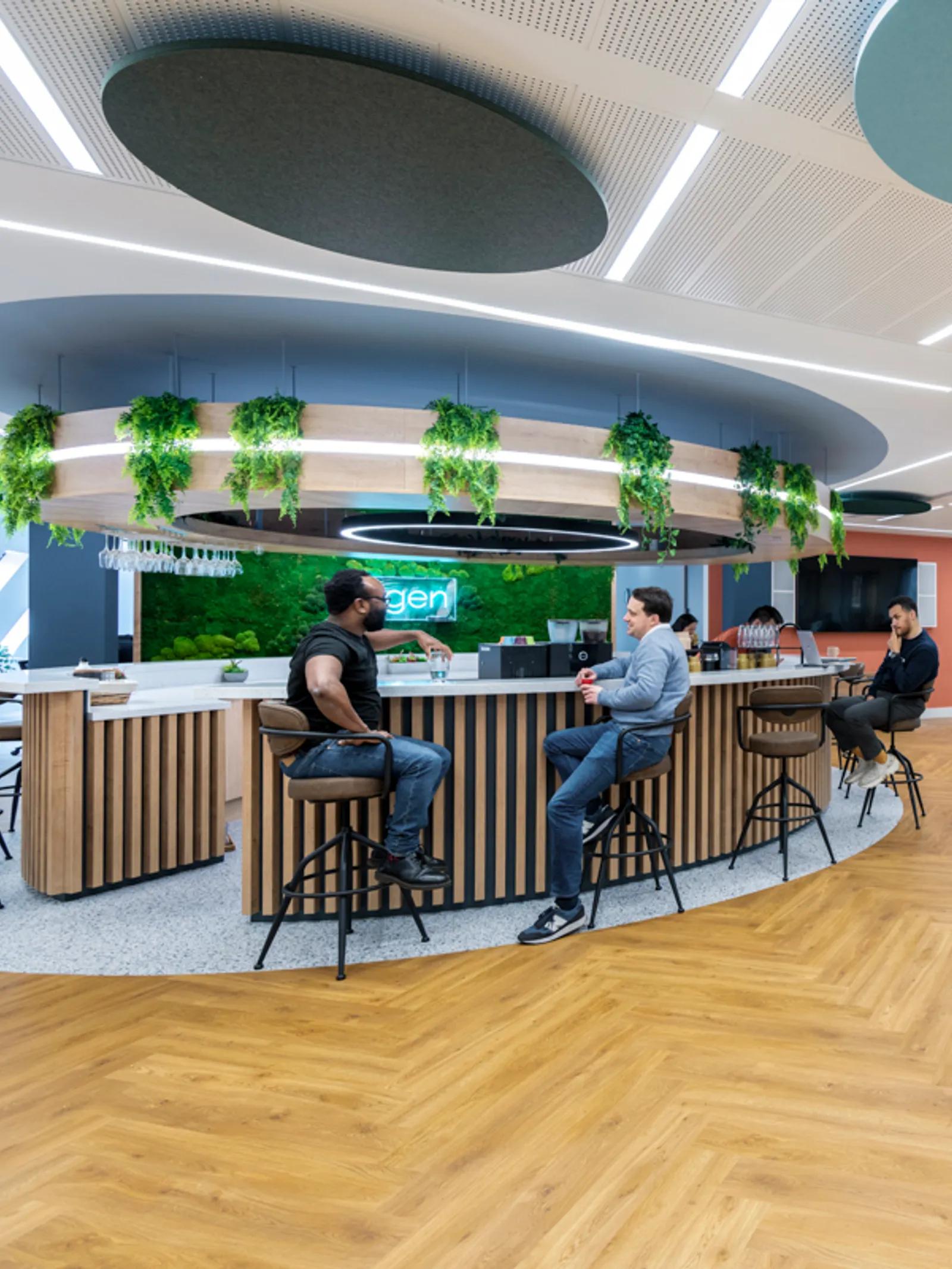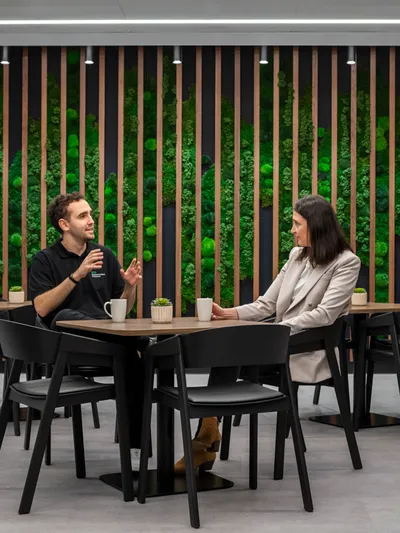As the world of work continues to evolve at an unprecedented pace, businesses are increasingly recognising the importance of creating office spaces that not only reflect their brand identity but also foster collaboration, innovation, and employee wellbeing. In this context, designing a modern, future-proofed office fit out is not just about aesthetics; it's about creating a workplace that can adapt to the ever-changing needs of employees and the demands of the modern business landscape.
A dynamic workplace for the modern employee
Embracing flexibility and adaptability
Employee needs and expectations are changing, and so office designs must adapt to suit the contemporary workforce. Traditional office layouts, characterised by rows of cubicles and fixed workstations, are no longer suitable for the dynamic nature of today's work. Instead, modern office design emphasises flexibility and adaptability, allowing spaces to seamlessly transition between different tasks and accommodate new technologies. This flexibility is achieved through modular furniture, reconfigurable workspaces, and adaptable infrastructure.
The rise of mobile technology has untethered employees from their desks, allowing for greater flexibility in work arrangements. With the widespread use of smartphones and tablets, employees can access work-related information, communicate with colleagues, and participate in virtual meetings from virtually anywhere. This flexibility not only accommodates the evolving needs of a diverse workforce but also contributes to increased job satisfaction and work-life balance.
Moreover, the global shift toward remote and flexible work arrangements underscores the importance of creating physical workspaces that complement virtual collaboration. Future-proofing the workspace requires a balance between in-person and remote work, acknowledging the diverse needs and preferences of a modern workforce. Offices designed with this foresight provide the necessary infrastructure and technology to seamlessly integrate both modes of work, ensuring that the physical workspace remains a valuable hub for collaboration and innovation.
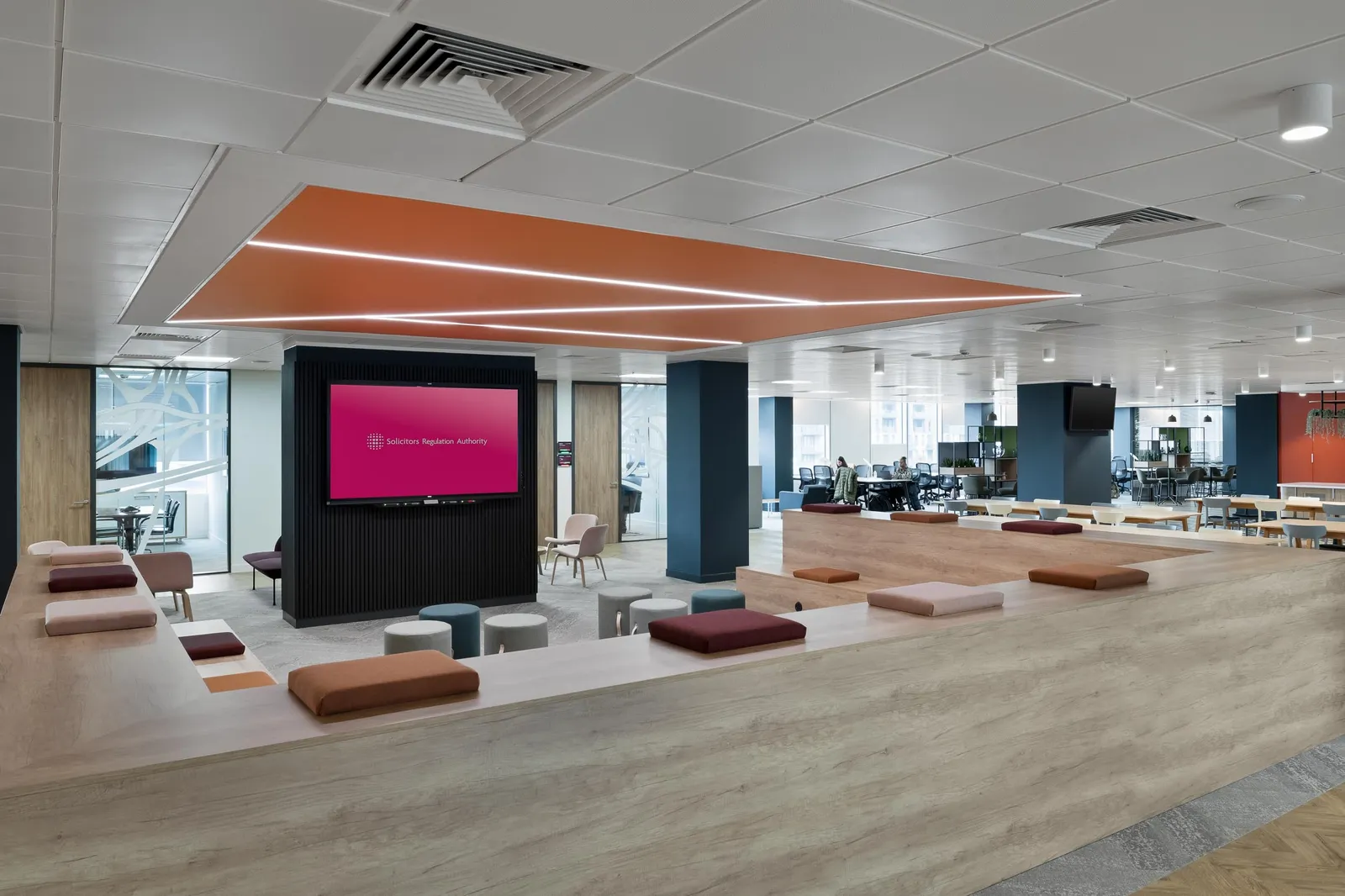
Technology integration: The backbone of a modern office fit out
Technology has revolutionised the way businesses operate, and office design has evolved to integrate these advancements seamlessly. From automated systems to data analytics tools, offices are increasingly equipped with cutting-edge technology to streamline workflows, enhance data collection and analysis, boost worker productivity, and improve safety protocols.
In the fast-paced realm of contemporary work environments, technology integration has become the backbone of modern offices, revolutionising the way we conduct business and interact within organisational structures. The seamless incorporation of cutting-edge technologies into the workplace has not only increased efficiency but has also fundamentally transformed the dynamics of collaboration and communication.
One of the key facets of technology integration is the advent of smart office solutions. From intelligent lighting and climate control systems to IoT-enabled devices, these technologies contribute to a more energy-efficient and comfortable workspace. Automated processes enhance the overall functionality of the office environment, allowing employees to focus on tasks that require human ingenuity while mundane operations are handled effortlessly by technology.
Tools for collaboration and the rise of AI
Collaboration tools have become instrumental in breaking down geographical barriers, enabling teams to work together in real-time, regardless of their physical locations. Video conferencing, cloud-based document sharing, and project management platforms have become indispensable in fostering seamless communication and collaboration among dispersed teams. This not only boosts productivity but also promotes a culture of inclusivity and flexibility.
Moreover, the integration of Artificial Intelligence (AI) and machine learning into office processes has ushered in a new era of predictive analytics and data-driven decision-making. From streamlining repetitive tasks to offering insights into employee performance, these technologies empower organisations to make informed choices, thereby enhancing overall efficiency and competitiveness. By embracing these evolving technologies, and staying abreast of the latest trends and best practices, offices will remain well-equipped for future advancements.
As we look to the future, technology integration will continue to be a driving force in shaping the modern workplace. The adoption of emerging technologies such as augmented reality (AR), virtual reality (VR), and advanced cybersecurity measures will further solidify the role of technology as the linchpin of office environments. Embracing these innovations ensures that modern offices remain agile, competitive, and equipped to navigate the ever-changing landscape of the business world. In essence, technology integration is not just a trend but an essential evolution that propels the modern office toward unprecedented levels of efficiency, collaboration, and innovation.
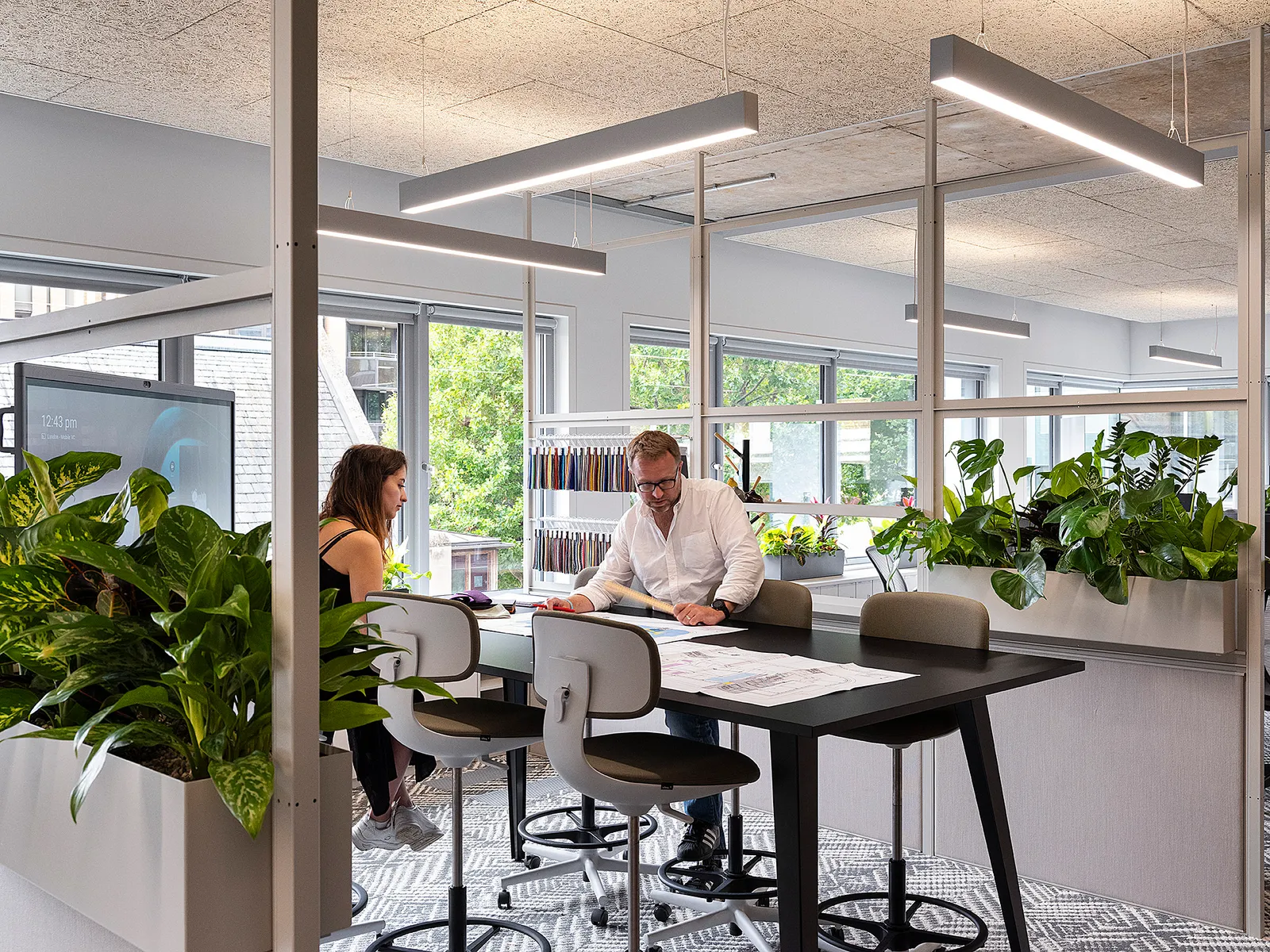
Wellbeing and productivity - an integral part of future-proofing and modernising your office fit out
Designing workspaces with a keen focus on employee wellbeing and productivity is not just a contemporary trend; it is a strategic move to future-proof the workspace in a rapidly evolving business landscape. Studies have shown that office design has a significant impact on employee wellbeing, productivity, and creativity. Recognising that employees are a company's most valuable asset, and creating environments that prioritise their wellbeing goes beyond providing ergonomic chairs and standing desks. It encompasses a holistic approach that considers physical, mental, and emotional health, ultimately influencing overall job satisfaction and productivity.
Incorporating elements of biophilic design, which integrates nature into the office environment, has been proven to enhance wellbeing and a trend that looks set to continue. Exposure to natural light, greenery, and open spaces contributes to reduced stress levels and increased cognitive function. As we navigate an era marked by the convergence of work and life, creating spaces that promote a healthy work-life balance is essential. Offices that prioritise employee wellbeing by providing spaces for relaxation, meditation, or physical activity demonstrate an understanding of the interconnectedness between personal fulfilment and professional performance.
Employee wellbeing is also intricately linked to productivity. A comfortable and positive work environment fosters a sense of belonging and engagement, leading to increased motivation and creativity. Ergonomic furniture, proper lighting, and noise control are not just aesthetic considerations but critical components that impact concentration and efficiency.
Forward-thinking organisations recognise that investing in the wellbeing of their workforce is an investment in the company's long-term success. Happier, healthier employees are more likely to be loyal, committed, and contribute positively to the organisational culture.
In essence, considering employee wellbeing and productivity in office design is not just a box ticking exercise; it is a strategic imperative for organisations looking to future-proof their workspace. By prioritising the holistic needs of their workforce, companies lay the foundation for resilience, adaptability, and sustained success for years to come.
Key considerations for a modern office fit out
When embarking on a modern office fit out, it is crucial to consider the following factors:
Company Culture and Brand Identity: The office design should reflect the company culture and brand identity, creating a sense of belonging and alignment among employees. "The Impact of Company Culture on Employee Retention in the UK" by the Chartered Institute of Personnel and Development found that companies with a strong company culture were 30% more likely to retain their employees than companies with a weak company culture.
Employee Needs and Preferences: Gather input from employees to understand their needs and preferences, ensuring the design caters to their comfort, productivity, and wellbeing.
Sustainability and Environmental Impact: Implement sustainable practices to reduce the office's environmental footprint, such as using energy-efficient appliances, water conservation measures, and eco-friendly materials.
Technology Integration and Scalability: Ensure the office design can accommodate future technology integration and adapt to changing technological needs.
Flexible Infrastructure and Adaptability: Design spaces that can be easily reconfigured to accommodate new workflows, team structures, and project requirements.
Investing in the future of work
A well-designed and modern office fit out is an investment in the future of your business, creating a space that attracts and retains top talent, fosters innovation, and drives business success. By incorporating the latest trends and best practices in office design, businesses can create workspaces that empower employees to reach their full potential and contribute to the company's long-term growth.
Are you ready to future-proof your workspace? Get in touch
